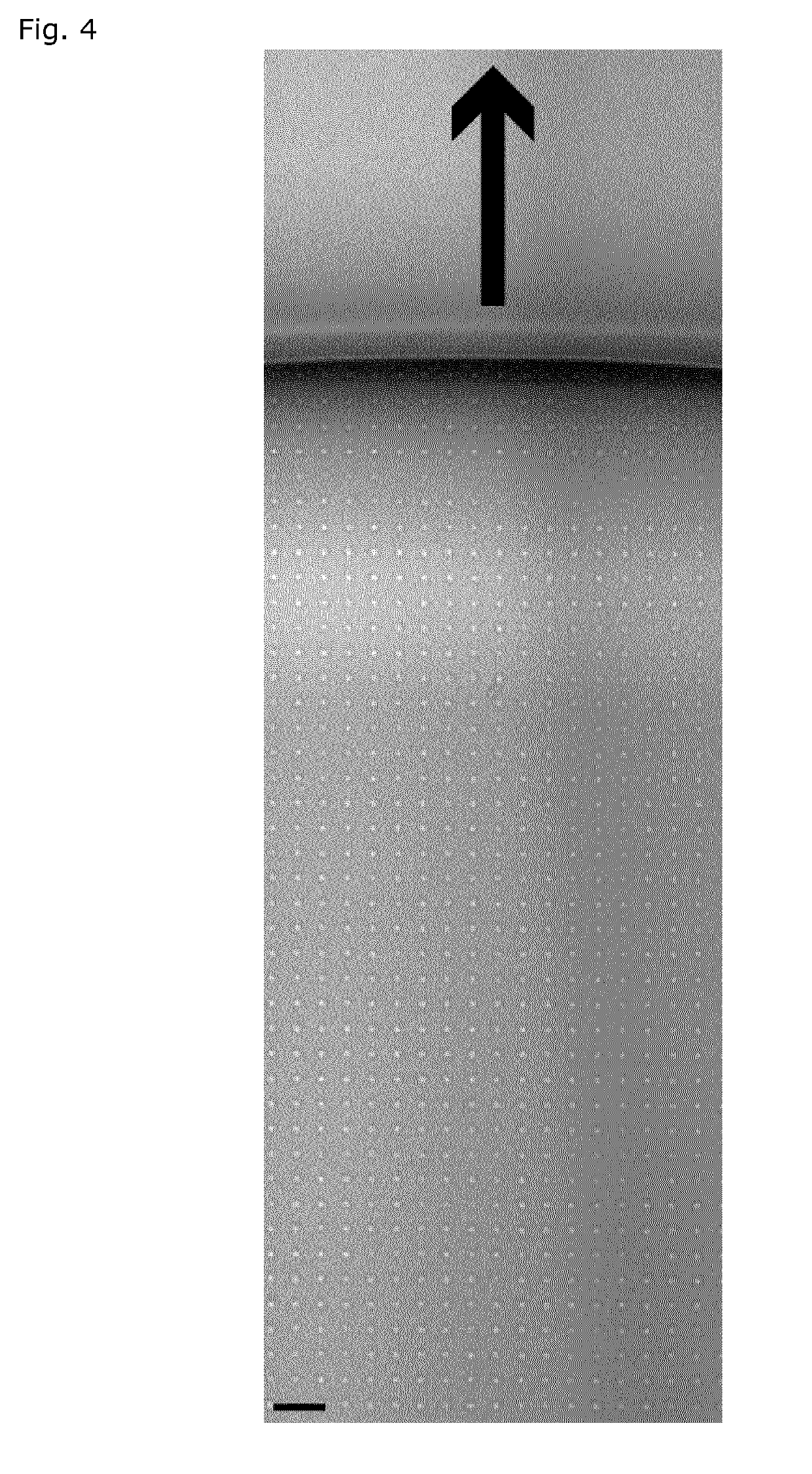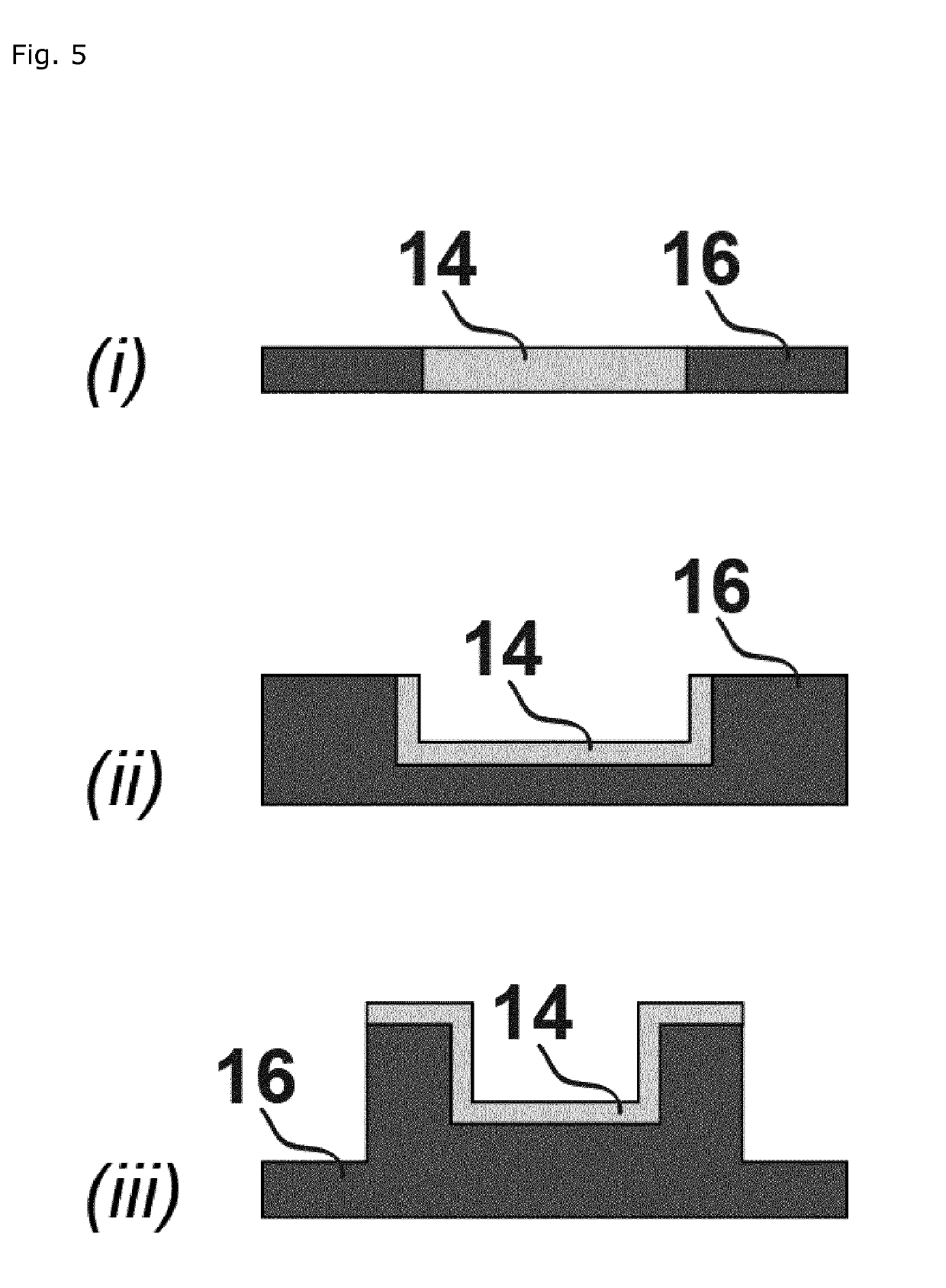Improvements for methods in digital counting
a technology of digital counting and methods, applied in the field of digital counting methods, can solve the problems of inability to distinguish capture and detection antibodies, inability to suppress undesired background noise, and typically arise background noise, so as to reduce false-positive detections and/or background noise in digital counting analysis, the effect of greatly reducing the number of errors
- Summary
- Abstract
- Description
- Claims
- Application Information
AI Technical Summary
Benefits of technology
Problems solved by technology
Method used
Image
Examples
embodiment 1
[0517]A flow system for digital counting of one or more analyte types in a sample comprising a support having a pattern of hydrophilic features in or on a hydrophobic substrate, the hydrophobic substrate being embedded in a flow compartment comprising at least one opening, the hydrophilic features configured to support a plurality of liquid nano-to-attoliter droplets each having a maximum droplet volume, and the flow compartment configured to support a gas phase seal reducing evaporation of each nano-to-attoliter droplet.
embodiment 2
[0518]The flow system according to embodiment 1, wherein the flow compartment has a volume (VC), where the volume (VC) is greater than the aggregate maximum droplet volume (VDA) of all liquid nano-to-attoliter droplets and is less than VMAX calculated by the following equation:
VMAX=VDAρLRT(1-RHI)MWP0exp(ΔHVAPR(1T-1T0))
where ρL is the volume density of the liquid, R is the molar gas constant, T is the temperature, RHI is the initial relative vapor saturation of the gas component of the liquid, P0 is a reference vapor pressure of the liquid at a corresponding reference temperature T0, MW is the molar weight of the liquid and ΔHVAP is the enthalpy of evaporation of the liquid.
embodiment 3
[0519]The flow system according to any one of embodiments 1-2, wherein the hydrophilic features are circular having a radius (RD), and where the maximum droplet volume (VD) a single hydrophilic circle can support is
VD=πRD3G(γ)G(γ)=2-3sin(π2-γ)+sin3(π2-γ)3cos3(π2-γ)
where γ is the liquid contact angle on the hydrophobic substrate.
PUM
| Property | Measurement | Unit |
|---|---|---|
| diameter | aaaaa | aaaaa |
| diameter | aaaaa | aaaaa |
| diameter | aaaaa | aaaaa |
Abstract
Description
Claims
Application Information
 Login to View More
Login to View More - R&D
- Intellectual Property
- Life Sciences
- Materials
- Tech Scout
- Unparalleled Data Quality
- Higher Quality Content
- 60% Fewer Hallucinations
Browse by: Latest US Patents, China's latest patents, Technical Efficacy Thesaurus, Application Domain, Technology Topic, Popular Technical Reports.
© 2025 PatSnap. All rights reserved.Legal|Privacy policy|Modern Slavery Act Transparency Statement|Sitemap|About US| Contact US: help@patsnap.com



